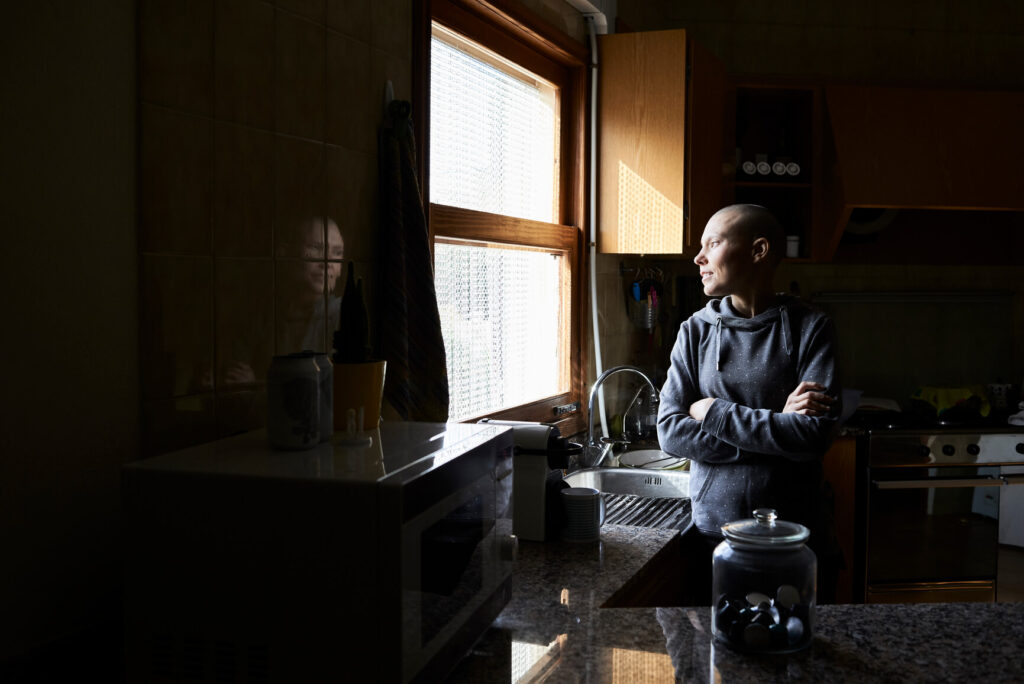News & Articles
Mammograms: How Often and When Should I Start? – Color
Mary Freivogel
Could this topic get any more perplexing? There are conflicting guidelines, confusing news headlines, and depending on which doctor you talk to, you might hear different things. What’s a girl to do?
Mammograms are extremely important for all women, as they allow doctors to find cancers before they can be felt and before there are symptoms. Here are the current guidelines for an average risk woman:
The radiologists say that she should have a mammogram every year starting at age 40.
The U.S. Preventive Services Task Force says that she should have a mammogram every other year starting at age 50. Family practice and internal medicine doctors often follow these guidelines.
The American Cancer Society (ACS) says she should start by age 45; however, if she decides to start at age 40, that’s ok. When she starts, she should have mammograms every year but when she hits age 55, she could switch to every other year.
How do I know if I am average risk or above average risk?
Use an online tool, like Bright Pink’s Assess Your Risk, Emory University’s Breast Cancer Genetics Referral Screening Tool, or Weill-Cornell’s Breast Screening Decisions.
If you have a family history of breast (or other types of) cancer on your mom or dad’s side of the family, you could consider seeing a genetic counselor to learn about your options, which may include genetic testing.
More detailed information about when to see a genetic counselor can be found on FORCE’s website. The National Society of Genetic Counselors offers a video that explains what to expect when you see a genetic counselor for cancer and also has an online tool to help you find a genetic counselor in your local area. Genetic counselors are experts in cancer risk assessment and can help you understand your risk of breast and other cancers.
A risk assessment is extremely important. In fact, the radiologists built this into their recent breast cancer screening guidelines. They state that every woman should have a risk assessment at age 30 so she knows when to start screening. And it’s important to remember that your risk assessment changes with your age and any changes to your reproductive or family history so it must be updated year-after-year.
It’s also important to know your breast density. Dense breast tissue not only increases your risk to develop breast cancer but also makes mammograms less effective. The only way to know your breast density is to have a mammogram, as it’s not something your doctor can tell by feeling your breasts. Therefore, having a baseline mammogram at age 40 is very important. If the mammogram shows dense breast tissue, you are not average risk and likely need to continue having a mammogram every year. You may also want to think about supplementing the mammogram with another type of exam, like an ultrasound. To learn more about this topic, visit www.areyoudense.org.
If I am average risk, how do I decide which schedule to follow for mammograms?
Since the guidelines are conflicting, there’s no one right answer for everyone. It’s important to be well-informed about the risks and benefits of mammography and understand how you’re your personal values fit into the equation. Consult with your doctor to help you decide. Weill-Cornell’s Breast Screening Decisions guides you through a shared decision-making process that allows you to make a choice that’s right for you. After you complete the module, you can print or save a pdf summary report to take to your doctor.
If I am above average risk, how do I know my breast cancer screening plan?
Women can be high risk due to a gene mutation found on genetic testing. But even those who do not have genetic testing or those who test negative may be at elevated risk based on their family history or other factors. If you are high risk, you may need earlier mammograms and/or exams in addition to a mammogram, such as a breast MRI. If you have a gene mutation, you may be at higher risk for other types of cancer as well. Cancer screening plans for high risk women are personalized. If you are in this category, be sure to consult with an expert who can help you understand your unique plan, including when you should start screening, what type of screening you should have, and how often you should be screened.
So, in summary, here’s the take home message when it comes to screening mammograms:
- Know your risk
- Know your breast density
- Make an informed choice
Most importantly, be an advocate for yourself. Take charge of your breast health. Don’t wait for a doctor to suggest a risk assessment or a mammogram. Be proactive and ask about one or both at your next doctor’s visit.
Important note! Regardless of your level of risk and your age, if you have signs or symptoms of breast cancer, please notify your doctor immediately, as a mammogram and other exams may be indicated.
Mary E. Freivogel, MS, CGC is the Immediate Past President of the National Society of Genetic Counselors. She is passionate about the genetic counseling profession and believes wholeheartedly that genetic counselors have an infinite number of talents and unique contributions to provide to breast cancer risk assessment efforts and countless other areas. Outside of work, she loves running and you’ll often find her asking random people on the street if she can pet their dog(s). She lives in the Denver metro area with her husband, two sons, two dogs, and two guinea pigs.



